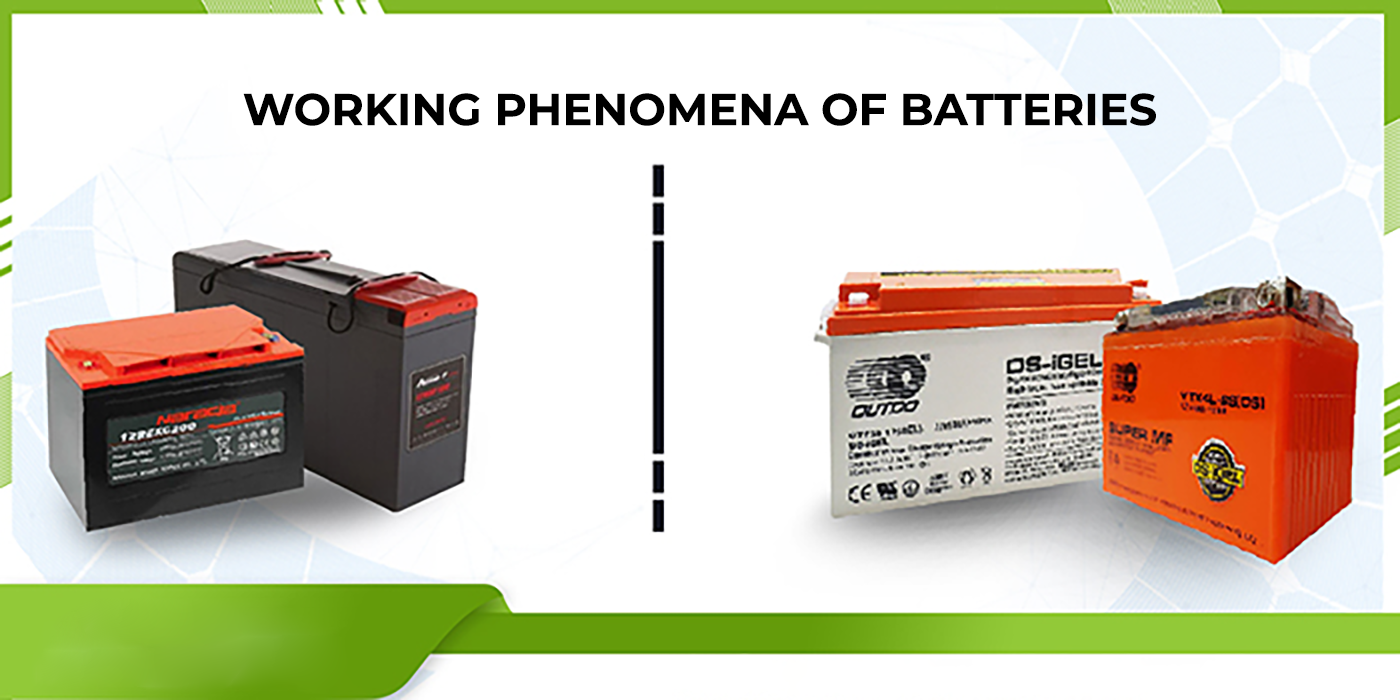Solar Batteries
What is Working Phenomena of Batteries?
Given the growing interest in energy storage technologies, it’s vital to understand how these systems operate in practice. You may decide if energy storage is the correct choice for you by understanding how energy storage systems combine with solar panel systems and the rest of your house or business.
In the section below, we explain how solar energy storage systems function and what results you can anticipate from your storage system. We also take a closer, more technical look at the specific processes that your battery uses to store that energy.
An Overview of how Solar Batteries Work Step-by-Step
The best solar batteries are those that store energy for later use. There are a few general steps to comprehend if you have a home solar panel system:
- Solar panels use the sun’s energy to produce electricity.
- An inverter converts this direct current (DC) electricity into alternating current (AC) electricity.
- Your home appliances are powered by the AC electricity.
- Your batteries are charged by extra electricity that isn’t utilized by your appliances.
- Your battery’s stored energy powers your appliances after the sun sets.
Step 1: Solar Power
The electricity generation process starts with the solar array on the roof. When sunlight strikes the panels, the visible light is transformed into an electrical current.
Depending on whether the system employs an AC or a DC battery, the DC electricity generated by the solar system can then either be converted to AC power or kept as DC power. I’ll talk more about that later.
Step 2: Battery Charging
Solar energy will be prioritised for the home. Everything in the house, from TVs and lights to air conditioning and charging stations for electric vehicles, will be powered by the electricity generated by the panels, which will be fed directly into the main electrical panel of the house.
Solar power systems frequently generate more energy than the home currently requires. Imagine a lovely spring day where the weather is mild, the residence isn’t consuming much electricity, and the solar panels are generating a lot of power. The solar system’s production can easily exceed the needs of the home under these circumstances.
Without a battery, the additional energy would be returned to the grid via the net metering method. This additional energy would, in essence, “turn the metre backwards” and provide the homeowner a bill credit that would help to offset power used from the grid when the system isn’t sufficient to fulfil the needs of the residence (like at night).
With a battery, the additional electricity the solar system is generating flows into the battery and charges it up rather of going to the grid. The quantity of excess energy produced determines how quickly the battery charges, which in turn depends on a number of elements like the size of the solar system and the current electrical demand in the home.
Step 3: DC vs AC Charging
All batteries require DC (direct current) to charge while dwellings operate on AC (alternating current). Because it converts the AC electricity from the wall into DC power to charge the laptop’s battery, your laptop cable has that large box on it.
If DC electricity is required to charge all batteries, what exactly is an AC battery?
An AC battery is one that can receive incoming AC power and converts it to DC power using an integrated inverter so that the battery can be charged. The inverter converts the DC electricity flowing from the battery pack back into AC power, which is then fed into the home after the battery supplies power to it.
The majority of contemporary solar batteries are AC batteries, including the Tesla Powerwall. The fact that AC batteries can be used with any existing solar system is their greatest benefit. They can accept the AC output from any system, therefore any solar inverter, even microinverters, can be coupled with them. As a result, they are very adaptable and simple to retrofit to already-existing solar systems.
The LG Chem DC battery, in contrast, lacks an integrated inverter. They must therefore be charged directly using DC power. This necessitates the use of a specialist inverter that can transmit solar panel-generated DC electricity directly into the battery without first converting it to AC. The external solar inverter receives the DC electricity from the power source and converts it into AC power when the battery needs to power the house.
The fact that DC batteries offer superior round-trip efficiency is their main benefit. 5% of the power is lost to heat whenever electricity is flipped from DC to AC (or vice versa). Therefore, you will lose more overall energy the more times you invert the power. As a result of less frequent power inversion, DC batteries are more efficient than AC batteries. Considering that DC batteries don’t come with the additional inverter hardware, they are frequently less expensive.
Step 4: Battery Discharging
After receiving a further solar charge, either AC or DC, the battery can now be used to power the home at a later time. A homeowner might seek to store excess energy for future use for two main reasons.
The first explanation is if the house has a grid outage. The battery system’s backup gateway will cut the house off from the grid as soon as there is a power outage and turn on the battery to start powering the circuits it has been linked to. The battery will perform similarly to a standard generator in this regard, with the exception that batteries are superior to generators in every significant sense.
The second justification for storing energy for later use is to benefit from utility companies’ time-of-use (TOU) rate arrangements. Since TOU rates better reflect the daily fluctuations in wholesale power prices, several utility providers are converting households to such plans. When installing solar panels, households in California’s three largest investor-owned utilities (PGE, SCE, and SDGE) must switch to a TOU rate plan.
The extra energy that the panels generate in the middle of the day is less valuable under a TOU rate plan than the power that is drained from the grid at night. As a result, by avoiding evening utility peak prices, adopting a solar battery can help homes save more money.
Conclusion
It really is that easy! Solar batteries collect extra solar energy and enable the homeowner to use it when it is most advantageous, such as during a power outage or to take advantage of additional electric bill savings. With Solar Source, you can get the best solar batteries for your solar system, whether residential or commercial. We provide solar batteries on retail and wholesale basis as well.


